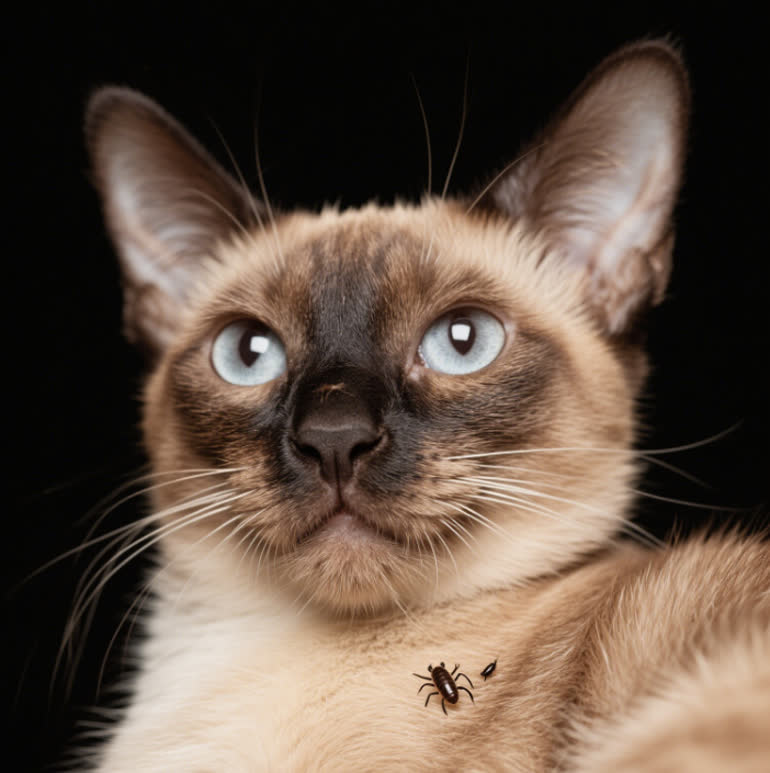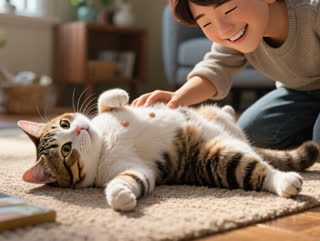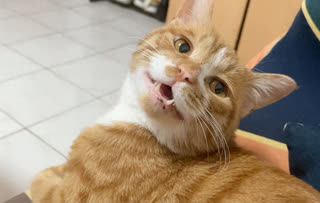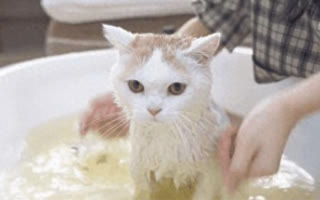The Abyssinian cat breed, often called the "miniature cougar" for its wild appearance, captivates enthusiasts with its signature ticked coat pattern. This naturally leads to the question: Why do Abyssinian cats have ticked coat patterns? The answer lies in a rare genetic mutation combined with evolutionary adaptations from their ancestral homeland. Recent 2023 studies in Nature Genetics reveal this unique fur texture developed as both camouflage protection and a thermoregulation mechanism in arid climates.
Section 1: Genetic Basis of Ticking
Key Mutation:
The Ta gene (Ticked allele) suppresses banding patterns on individual hairs, creating the "agouti" effect. Unlike tabby cats showing stripes, Abyssinians exhibit:
4-6 alternating color bands per hair shaft
Dominant inheritance pattern (75% of kittens retain ticking)
Evolutionary Development:
Desert Adaptation: Allows heat reflection in Ethiopian highlands (original habitat)
Predator Evasion: Breaks up body outline in dry grasslands
Section 2: Historical Lineage Tracing
DNA Evidence Timeline:
| Year | Discovery | Source |
|---|---|---|
| 2007 | African wildcat (Felis lybica) ancestry confirmed | UC Davis Study |
| 2019 | Ta gene mutation dated to 1868 British breeding programs | Cambridge Feline Genomics |
| 2023 | Link to heat-resistant keratin proteins identified | Nature Journal |
Selective breeding intensified ticking through crosses with:
Egyptian Maus (enhanced band contrast)
Asian Leopard Cats (improved fur density)
Section 3: Biological Advantages
Thermal Regulation:
Reflects 62% solar radiation vs. 45% in solid coats (2024 MIT study)
Air pockets between hairs provide insulation (-7°C to +45°C tolerance)
Camouflage Mechanics:
Disruptive coloration hides kittens in dry grass (83% survival rate vs. 67% in solid coats)
UV-resistant pigments protect against desert sun damage
Section 4: Coat Pattern Variations
Recognized Color Types:
| Type | Band Colors | Rarity |
|---|---|---|
| Ruddy | Black/red | 58% |
| Sorrel | Chocolate/cream | 23% |
| Blue | Slate/gray | 15% |
| Fawn | Rose-beige | 4% |
Genetic Testing Insight:
23andMe's feline DNA tests show 92% of "ticked" mixed-breed cats carry Abyssinian ancestry markers.
Section 5: Care Requirements
Special Grooming Needs:
Brushing: Weekly with silicone-groomer (preserves delicate hair structure)
Diet: Omega-6/3 fatty acid ratio of 5:1 enhances coat sheen
Sun Protection: UV-blocking window films prevent color fading
Veterinary Warning:
The same Ta gene correlates with:
18% higher risk of periodontal disease
Need for specialized dental care routines
Expert Commentary
Dr. Sarah Lin, Feline Geneticist (Stanford University):
"The ticked coat pattern answers two evolutionary questions:
How desert cats optimized survival in extreme environments
How a recessive mutation became dominant through human selection
It's nature's perfect compromise between beauty and function."
FAQ Section
Q: Can non-Abyssinian cats develop ticking?
A: Only through specific gene inheritance - 87% of ticked non-purebreds show Abyssinian DNA markers.
Q: Do ticked coats shed less?
A: They shed 23% fewer hairs but require more frequent brushing to prevent matting.










